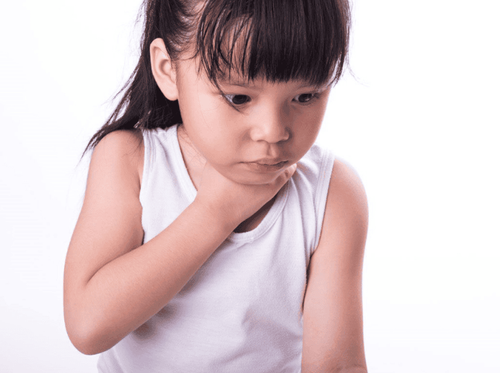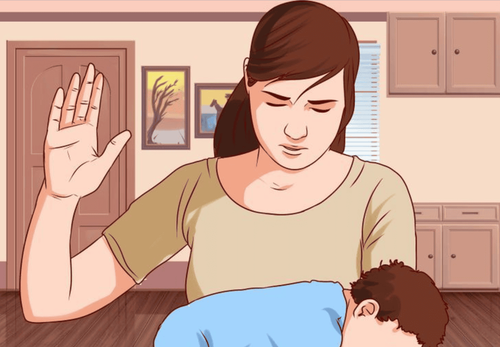This is an automatically translated article.
Jelly jellies are the favorite foods of children. Currently, agar jelly has many fancy colors and is an attractive food for children. Many parents believe that jelly is made from fresh fruits, so it contains a variety of essential vitamins and minerals for children. Therefore, feeding children a lot, but the truth is not so.
1. Eating a lot of jelly can cause poisoning
Nutrition experts said that the composition of jelly is mainly carrageenan - a biopolymer extracted from some types of seaweed, it has benefits for intestinal function, but eat too much. too much will make it difficult for the body to absorb minerals, water, sugar, emulsifiers sodium alginate, agar powder, flavorings... They do not have much nutritional value, only bring temporary palatability to children, like a type of confectionery.
Sodium alginate (sodium salt of alginic acid) and agar (powder for making jellies) belong to the type of fiber in daily meals. Fiber is an indispensable food source, but too much of it will affect the absorption of the body, especially fat and protein. In addition, iron, zinc, and inorganic salts can be combined into soluble or insoluble mixed substances, affecting the body.
Children eat a lot of jelly can affect the absorption of some substances in the body such as protein, can block the absorption of trace elements such as iron, zinc,... If children eat Many jellies for a long time will cause children to change their taste buds and become addicted to foods with unusual tastes.
The function of excreting and eliminating toxins of the liver and kidneys in young children is still low, it is easy for toxins to accumulate in the body, causing many obstacles to metabolism, affecting development. of children, can also often damage the stomach lining, thereby causing gastritis.
Currently, the abuse of industrial chemicals to create odors or make products tough is increasing. Therefore, in order to limit chemical poisoning, parents should not let children eat jelly of unknown origin.

Trẻ em ăn nhiều thạch rau câu có thể gây ngộ độc
2. Death due to fossils
Currently, hospitals receive many cases of children choking on foreign bodies, in which choking is the most dangerous type because it is very easy to lead to death. Jelly, which is soft and slippery, is often produced under a cylinder, so it is easy to drift down the throat. Parents when feeding children often peel off the outer layer of jelly and then squeeze the top of the jelly so that the jelly is pushed out faster and stronger. There are quite a few cases of young children being pushed into their mouth by the whole piece of jelly, suddenly drifting down their throat, so they choke on a foreign object, inserted into the airway, causing suffocation.
Jelly is a very soft and slippery food, so when it drifts down the airway, it easily changes shape according to the airway, clinging to the child's airway, so it can cause the child to die soon after. Not to mention, because the jelly is soft, when using a special tool to pick up the jelly, it is also very easy to break into small pieces, these pieces continue to fall deep into the child's airway, making it very difficult for first aid.
To prevent choking on foreign bodies, it is best not to give jelly to children under 5 years old because young children, their airway reflexes are not yet complete, so it is easy to choke. For children over 5 years old, when feeding them, they should use a spoon to crush a piece of jelly, slowly fertilize the child. When a child is choking, absolutely do not use your hand to poke the child's throat, so there is a risk of foreign objects getting deeper, or can scratch the child's throat area, causing edema, making breathing difficult. more serious. In case the child is found to be cyanotic, has stopped breathing, needs first aid on the spot by tilting the child's head upside down, then patting the child on the back so that the object passes through the glottis, the child will breathe easier. Then take the child to the nearest medical facility for immediate emergency treatment.
SEE ALSO: First aid for children with choking objects
3. Absolutely do not let children eat jelly when alone
There are many parents who see that their children love to eat jelly, so they often buy a whole bag for the children to sit and eat while playing, to have time to do other things. This is really dangerous for children. Children are very young, can not react in time when unfortunately the piece of jelly suddenly drifts down the throat. It will be extremely dangerous, the child can die if not given first aid and emergency care in time. Always keep an eye on your child, if they like to eat, they can feed them small pieces slowly.

Cha mẹ có thể bón cho bé ăn thạch rau câu từng miếng nhỏ để tránh bị hóc
4. Making "handmade" jelly
Currently, the issue of food hygiene and safety is the top concern of parents when choosing foods for their children. So, making jelly at home is a very interesting idea. Parents can make jelly from fresh, hygienic ingredients, without worrying about the presence of additives in the product. Choose the fruits that your baby likes, they will surely love to eat them. Should pay attention to feeding children to eat in small pieces, do not let children eat alone to avoid unfortunate risks.
Parents should supplement their children with supportive products containing lysine, essential micro-minerals and vitamins such as zinc, chromium, selenium, and B vitamins to help fully meet their child's nutritional needs. At the same time, these essential vitamins also support digestion, enhance nutrient absorption, help improve anorexia, and help children eat well.
Parents can learn more:
Signs of zinc deficiency in children
Micronutrient deficiency and failure to gain weight in children
Please regularly visit Vinmec.com website and update useful information to take care of your child. Take care of the baby and the whole family.













